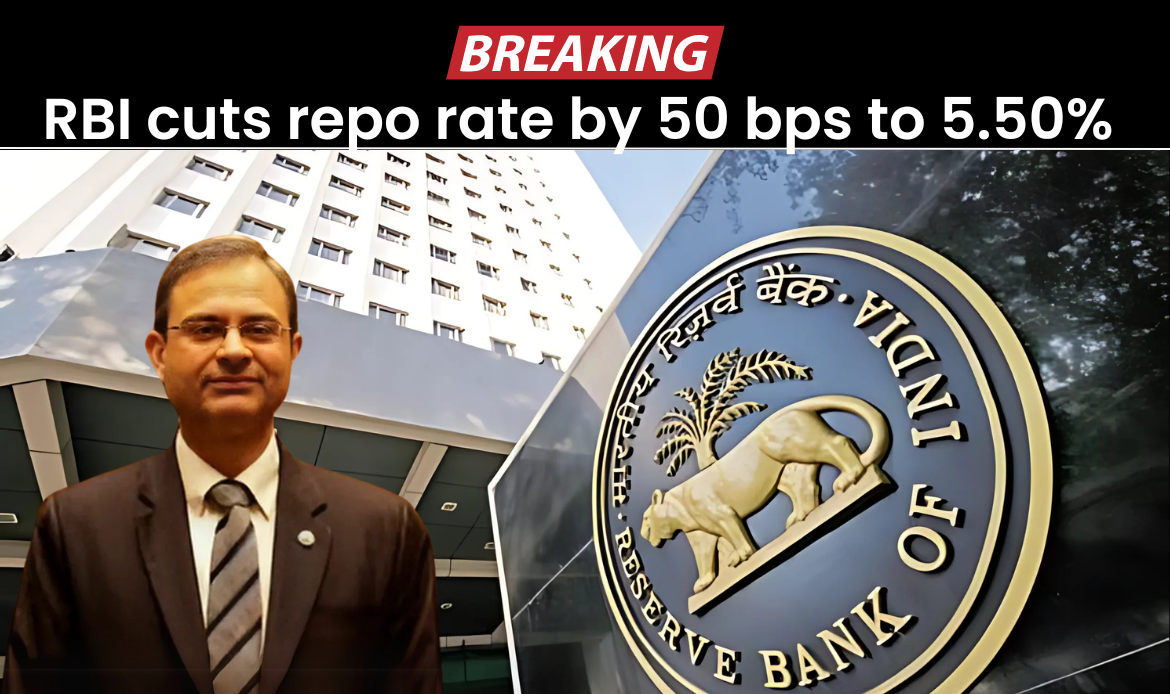Here's How You Can Benefit from Lower Interest Rates
The Reserve Bank of India (RBI) cut its policy repo rate by 50 basis points on June 6, 2025, with a clear message to banks: pass the benefit to borrowers. The move is expected to reduce the cost of loans and stimulate credit demand across the economy.

What This Means for Borrowers
The repo rate is the rate at which the RBI lends money to commercial banks. A cut in this rate allows banks to borrow more cheaply and ideally, lend more cheaply to individuals and businesses.
Most major banks have responded positively:
- PNB, Bank of Baroda, and Union Bank slashed their lending rates by 50 bps, bringing home loan interest rates as low as 7.35–7.50%.
- HDFC Bank and ICICI Bank also adjusted their rates downward, although private banks tend to pass on smaller portions of the cut.
How to Maximise the Benefit from RBI’s Rate Cut
- 1) Check Your Loan Type
If you’re repaying a floating-rate EMI (home, personal, or auto loan), you’re likely to benefit from the reduced repo rate. Ensure your loan is linked to an EBR (External Benchmark Rate) or RLLR (Repo Linked Lending Rate). If it’s not, ask your bank about re-benchmarking to take advantage of lower interest rates.
- 2) Monitor Bank Communications
Banks typically notify borrowers through SMS, email, or online portals. Look out for updates from June 10 to June 15, when many banks implemented the revised rates.
- 3) Recalculate Your EMI
Even a 50 basis point reduction (0.50%) can save you thousands of rupees monthly. Use your bank’s EMI calculator or speak to your relationship manager to estimate your new EMI.
- 4) Explore Refinance Options
If your current bank hasn’t passed on the rate cut, you can consider refinancing with another lender. Just make sure to compare processing fees, foreclosure charges, and other conditions.
- 5) Consider a Balance Transfer
Transferring your existing loan to a bank offering lower interest rates can lead to long-term savings, especially if you have several years left on your loan.
- 6) New Borrowers: Negotiate the Spread
Banks may reduce the repo-linked base rate but still charge a higher spread (bank’s margin). If you’re applying for a new loan, negotiate for a lower spread especially if your credit score is high.
- 7) Businesses & SMEs: Leverage the Opportunity
MSMEs and startups can take advantage of the lower rates to get cheaper working capital or expansion loans. Now may be a great time to invest in growth.
Outlook: What This Means for Your Wallet
Lower repo rates can:
- Reduce EMIs on existing and new loans.
- Encourage borrowing, both personal and business.
- Boost economic activity through increased spending and investment.
However, the actual benefit depends on how well banks pass on the rate cut and how informed you are as a borrower.
Your Action Plan
- Track interest rate updates from your bank
- Use EMI calculators to measure your potential savings
- Explore refinance or negotiate better rates if needed
- Utilize the savings for investments, upgrades, or paying off debt faster
Final Thoughts
RBI has done its part by reducing the cost of capital. Now it’s your move. Whether you’re a homebuyer, car buyer, or small business owner, this is a good time to revisit your finances and optimize your borrowing.
Stay informed. Stay proactive. Let the repo cut work in your favor.
